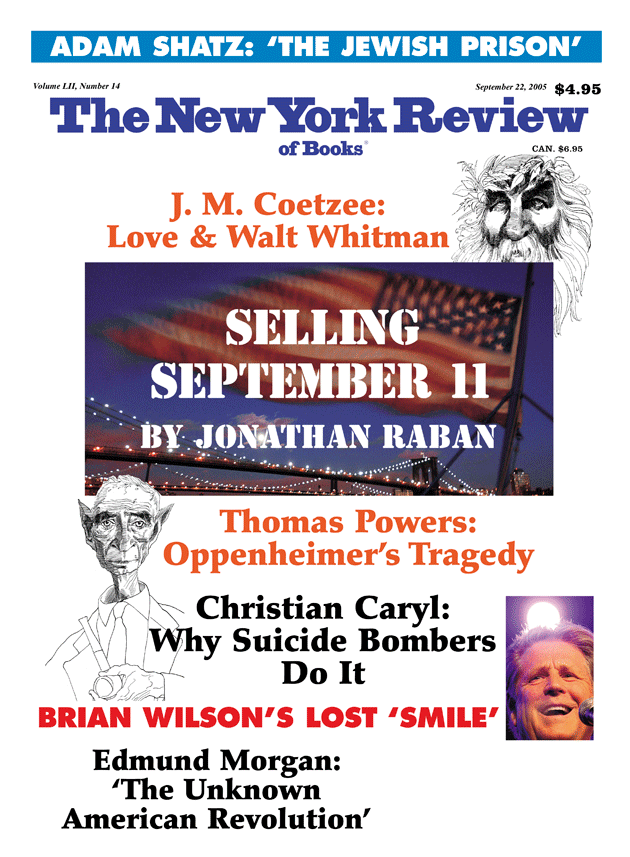In response to:
Beyond Real from the May 26, 2005 issue
To the Editors:
More on Max Ernst’s dire blasphemy of 1926: his overlifesize tableau of the Virgin Mary spanking her son, on view in the Ernst retrospective at the Metropolitan Museum of Art (through July 10), and lately reviewed by John Updike [NYR, May 26]. Twelve years ago, in response to my own piece on the Ernst outrage [NYR, May 13, 1993], a kindly reader sent me the following:
…This heresy did not originate with Mr. Ernst. There is a remarkable Scots cum Appalachian ballad, “The Bitter Withy Tree,” in which Jesus curses the tree for providing the switch with which Mary beats him for murdering three young boys. They had refused to play ball with him.
We are sons of lords and ladies all
And born in bower and hall
While you are only a Jew maid’s child
Born in an ox’s stall.
He builded a bridge from the beams of the sun
And over the water danced he,
There followed him those rich young men
And drownded they were all three.
Somehow, it doesn’t sound heretical when you sing it.
Signed, Robin Roberts (a folksinger who had worked closely with the eminent folk song collector Alan Lomax).
Further correspondence with Ms. Roberts adduced copious scholarship (from the Journal of the Folk-Song Society, London, Vols. II, 1905–1906, and IV, 1910–1913) concerning text and tune of “The Bitter Withy.”
The legend sung in this carol probably dates from the fourteenth century. It has the five-year-old Jesus told by his mother that playing ball requires a playmate; whereupon Jesus goes forth, meets three young fops, asks whether one would play with him, and suffers rebuff on account of his lowly birth. Jesus retaliates by knitting sunbeams into a bridge, which he passes over, followed by the three snoblings, who promptly drown.
Then Mary mild fetched home her child
And laid him across her knee
She took a switch from the withy withy tree
And gave him slashes three.
In the concluding verse, Jesus curses the withy (or willow) tree—
That causes me to smart
The withy shall be the very first tree to perish at the heart.
One scholar suggests that the curse corresponds to a “fact of nature: the quick decay of the willow.”
The fantasy of a disagreeable Christ Child, fully deserving of the correction he receives in Ernst’s picture, came not ex nihilo. It surely evolved from Apocryphal Gospels such as the Pseudo-Matthew and the earlier Gospel of Thomas. About the latter, The Oxford Dictionary of the Christian Church (1957) has this to say:
Its collection of stories of the boyhood of Christ presents us with an unedifying picture of a conceited, and frequently even malicious child who uses his miraculous powers for the satisfaction of his whims.
Is there a French cognate to the English carol? Had its irreverence somehow infected André Breton, who suggested the subject of the chastising Virgin?
Mr. Updike is right to say that “this scene cannot be enrolled in Christian iconography—it has no Gospel authority….” But enrolled it may be in the iconography of medieval folklore, drawing authority, not from the canonic, but from Apocryphal Gospels.
Leo Steinberg
New York City
This Issue
September 22, 2005


